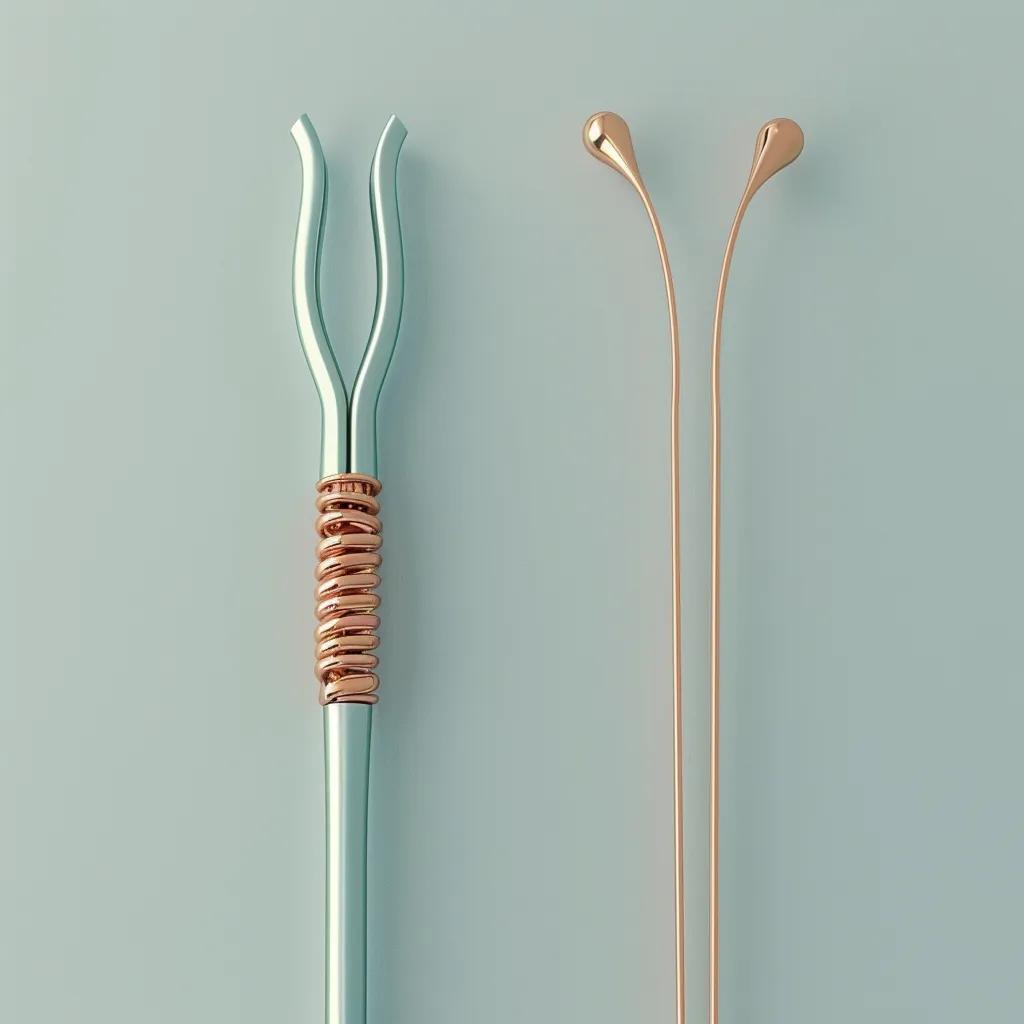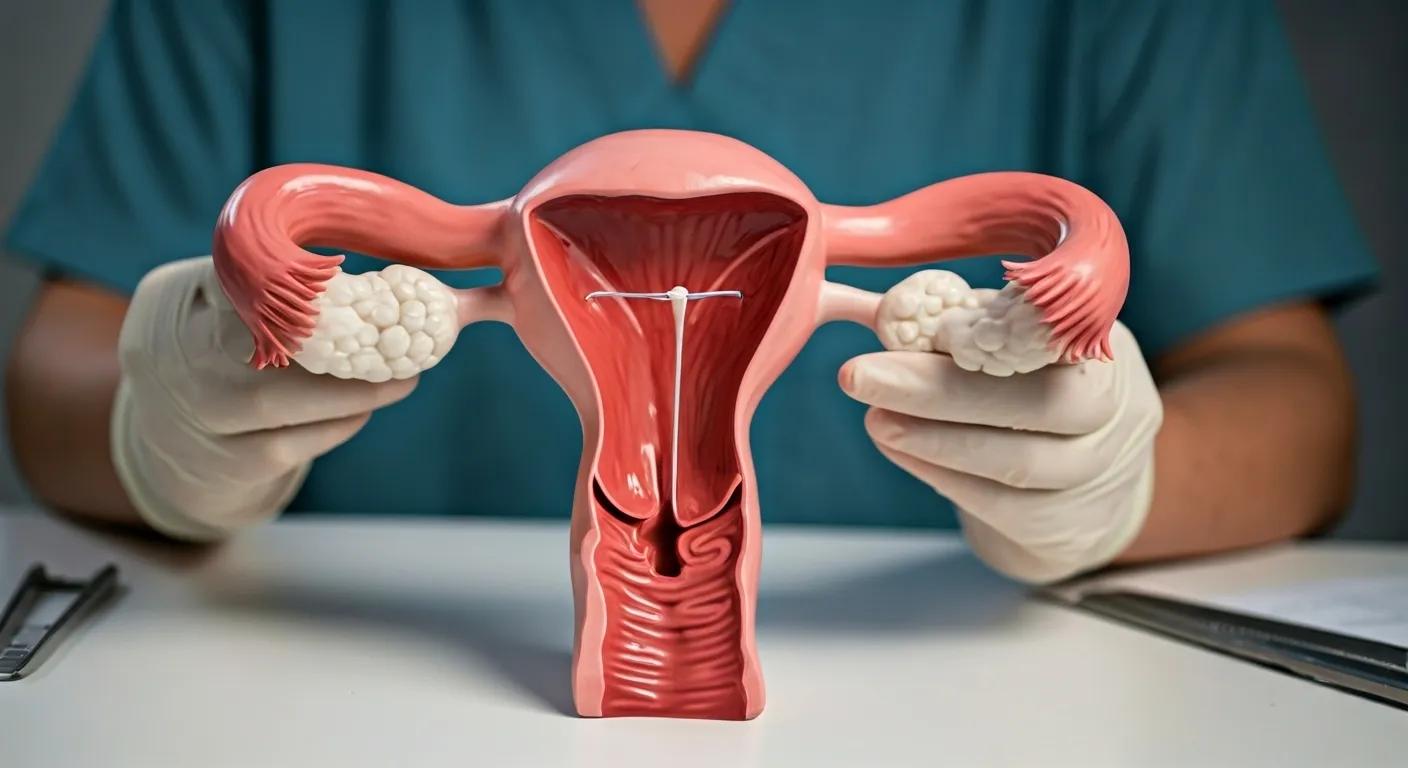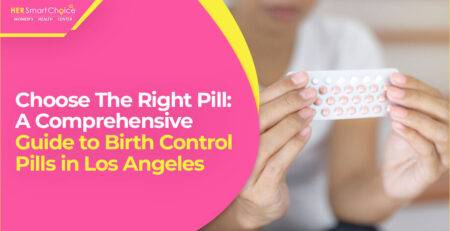Why IUDs Are Considered the Best Birth Control Method: Effectiveness, Benefits, and Safety Explained

In the United States, fewer than 1 percent of women using intrauterine devices (IUDs) become pregnant each year, making IUDs one of the most effective reversible birth control methods available. This article explains why IUDs stand out for long-term reliability, convenient “set-it-and-forget-it” usage, and rapid return to fertility after removal. You will learn about the two main types of IUDs, their mechanisms of action, comparative effectiveness, key benefits, potential risks, procedural expectations, method comparisons, and ideal candidates. By the end, you’ll understand why IUDs often rank as the healthiest birth control method and whether an IUD is the best birth control choice for you.
Follow Us!
Effectiveness of IUDs
IUDs are highly effective, with a failure rate of less than 1% in the United States, making them one of the most reliable reversible birth control methods. This high effectiveness is due to the continuous protection provided by the device, eliminating the potential for user error.
Hatcher, R. A., Trussell, J., Nelson, A. L., Cates, W., Stewart, F. H., & Kowal, D. (2011). Contraceptive technology (20th ed.). Ardent Media.
This source supports the article’s claim about the high effectiveness of IUDs compared to other birth control methods.
What Are the Main Types of IUDs and How Do They Work?

An intrauterine device (IUD) is a T-shaped medical device inserted into the uterus to prevent pregnancy by altering sperm movement, thinning the uterine lining, or releasing copper ions, thereby providing continuous contraception for years. IUDs fall into two categories—hormonal and copper—each with distinct mechanisms and durations of action. This section examines how hormonal IUDs release progestin, how copper IUDs create a spermicidal environment, and how their durations compare.
What Is a Hormonal IUD and Which Brands Are Available?
A hormonal IUD releases levonorgestrel directly into the uterine cavity, thickening cervical mucus, thinning endometrium, and reducing sperm viability to prevent pregnancy for 3–8 years. Major brands include:
- Mirena: Provides up to 8 years of contraception and significantly reduces menstrual bleeding.
- Kyleena: Smaller frame with effective protection for up to 5 years and minimal hormonal exposure.
- Liletta: Offers similar benefits to Mirena at reduced cost, lasting up to 8 years.
- Skyla: Designed for nulliparous women, effective for 3 years with a lower hormone dose.
Each levonorgestrel-releasing device combines high efficacy with menstrual symptom relief, leading naturally to a comparison with copper IUDs in terms of duration and mechanism.
How Does a Copper IUD Prevent Pregnancy?
A copper IUD continuously releases copper ions into uterine fluid, creating a local inflammatory reaction that immobilizes sperm and prevents fertilization for 10–12 years. The absence of hormones eliminates systemic side effects while still achieving over 99 percent effectiveness. Its mechanism complements the hormonal approach by leveraging copper’s spermicidal properties and providing a non-hormonal option well suited for those seeking hormone-free contraception.
How Do Hormonal and Copper IUDs Compare in Duration and Mechanism?
Below is a comparison of the two IUD types using an entity-attribute-value format to illustrate their distinct characteristics:
| Entity | Attribute | Value |
|---|---|---|
| Hormonal IUD | Active Ingredient | Levonorgestrel |
| Hormonal IUD | Duration of Use | 3–8 years |
| Hormonal IUD | Mechanism | Thickens cervical mucus, thins lining, reduces sperm viability |
| Copper IUD | Active Ingredient | Copper |
| Copper IUD | Duration of Use | 10–12 years |
| Copper IUD | Mechanism | Releases copper ions, induces spermicidal inflammatory response |
This structured overview highlights how hormone release contrasts with copper’s spermicidal effect, setting the stage to examine why both achieve exceptional reliability.
Why Are IUDs Considered the Most Effective and Reliable Birth Control Method?
IUDs deliver over 99 percent effectiveness by eliminating daily user error and providing continuous protection, making them among the most reliable contraceptives available. Their mechanism ensures sustained prevention without routine action, creating a high level of confidence in pregnancy prevention. In the following sections, we compare IUD efficacy rates, explore the convenience of long-term protection, and discuss fertility restoration after removal.
What Is the Effectiveness Rate of IUDs Compared to Other Methods?
IUDs have a typical-use failure rate under 1 percent, compared with:
- Birth Control Pill: Approximately 7 percent failure with typical use.
- Contraceptive Patch: Around 7 percent failure rate.
- Contraceptive Implant: Less than 1 percent failure rate, similar to IUDs.
- Barrier Methods (e.g., condoms): 13–18 percent failure rate.
- Withdrawal Method: Nearly 20 percent failure rate.
These figures demonstrate that IUDs outperform most other reversible methods, reinforcing their reputation for reliability and guiding users to consider a long-acting reversible contraception option.
How Does Long-Term Protection Make IUDs Convenient?
Long-term protection from IUDs reduces the cognitive and logistical burden of daily or monthly contraceptive decisions. Key convenience factors include:
- No Daily Reminders: IUDs eliminate the need for daily pill-taking.
- Reduced Clinic Visits: Once inserted, most IUDs require replacement only every 3 to 12 years.
- Consistent Effectiveness: Protection remains steady without user intervention.
This “install-and-forget” model ensures that contraception does not interrupt daily routines, leading into the next discussion on reversibility and fertility.
How Quickly Does Fertility Return After IUD Removal?
Fertility typically returns within one menstrual cycle after IUD removal, as ovulation resumes almost immediately once the device is out of the uterus. Patients often conceive within three to six months post-removal, matching fertility rates of non-IUD users and underscoring the reversible nature of this long-acting method.
What Are the Key Benefits of Using an IUD for Birth Control?
An IUD offers continuous, reversible contraception that enhances reproductive autonomy through high effectiveness, low maintenance, and rapid fertility restoration. The following subsections explore the “set-it-and-forget-it” convenience, menstrual benefits of hormonal IUDs, and the appeal of a hormone-free copper option.
How Does the ‘Set-It-and-Forget-It’ Convenience Work?
The “set-it-and-forget-it” convenience of an IUD stems from its long duration and independence from daily actions. After a one-time insertion:
- The device actively prevents pregnancy without user input.
- Check-ups occur infrequently, typically once per year.
- No prescription renewals or dosage adjustments are needed.
This approach streamlines contraceptive management and transitions into the menstrual benefits specific to hormonal IUDs.
What Menstrual Benefits Do Hormonal IUDs Provide?
Hormonal IUDs offer multiple menstrual advantages:
- Reduced Bleeding: Many users experience lighter periods or amenorrhea.
- Less Cramping: Thinner endometrial lining correlates with decreased pain.
- Management of Dysmenorrhea: Relief from painful ovulatory cycles.
These menstrual improvements make levonorgestrel IUDs therapeutic for heavy bleeding and menstrual disorders, leading naturally to the non-hormonal alternative.
Menstrual Benefits of Hormonal IUDs
Hormonal IUDs can provide significant menstrual benefits, including lighter periods, reduced cramping, and relief from heavy bleeding. These benefits are a result of the progestin released by the IUD, which thins the uterine lining.
American College of Obstetricians and Gynecologists. (2021). Long-Acting Reversible Contraception: IUDs and Implants.
This citation supports the article’s discussion of the benefits of hormonal IUDs, specifically the positive effects on menstrual cycles.
Why Is the Copper IUD a Preferred Non-Hormonal Option?
A copper IUD appeals to those who prefer to avoid hormones while still achieving robust contraception. Its benefits include:
- Hormone-Free Design: Eliminates systemic hormonal exposure.
- Extended Longevity: 10–12 years of continuous protection.
- Emergency Contraception Use: Can be inserted up to five days after unprotected intercourse.
This combination of hormone-free efficacy and multi-year coverage rounds out the spectrum of IUD advantages.
What Are the Common Side Effects and Risks Associated with IUDs?
IUDs carry both common side effects and rare serious risks, requiring clear guidance on what to expect. The device’s presence in the uterus can alter bleeding patterns and carry procedural risks, so this section details typical reactions, infrequent complications, and ways to address misconceptions about safety.
What Side Effects Can Users Expect After IUD Insertion?
After insertion, users may experience:
- Spotting or light bleeding for 1–3 months.
- Mild to moderate cramping or pelvic discomfort initially.
- Irregular cycles or breakthrough bleeding with hormonal IUDs.
- Heavier menstrual flow and cramps with copper IUDs.
These short-term effects usually subside within the first few cycles, paving the way to review serious but rare risks.
What Are the Rare but Serious Risks of IUD Use?
Infrequent but significant complications include:
- Expulsion: Occurs in 2–10 percent of users, where the device partially or fully dislodges.
- Uterine Perforation: Less than 1 percent risk during insertion, when the device penetrates the uterine wall.
- Infection: Pelvic inflammatory disease risk is low when screening and aseptic technique are applied.
Understanding these risks supports informed decision-making and sets up the need to dispel unfounded fears.
How Can Misconceptions About IUD Safety Be Addressed?
Clear, evidence-based information can counter myths such as infertility or severe pain. Key clarifications include:
- Modern IUDs do not increase long-term infertility rates.
- Most insertions cause only brief discomfort, often managed with over-the-counter pain relief.
- Routine STI screening and proper technique minimize infection risk.
Accurate education enhances trust and leads into practical insertion and removal guidance.
How Is an IUD Inserted and Removed? What Should Users Expect?

Insertion and removal of an IUD are brief outpatient procedures that involve minimal preparation and rapid recovery. Understanding each step reduces anxiety and ensures smooth contraceptive management. The next subsections describe the processes, aftercare, and removal protocol.
IUD Insertion and Removal Procedures
The procedures for IUD insertion and removal are brief outpatient procedures. Insertion involves placing the T-shaped device into the uterus, while removal involves grasping the strings and gently extracting the device. Both procedures are typically quick, with minimal recovery time.
World Health Organization. (2018). Medical eligibility criteria for contraceptive use (5th ed.).
This source provides information on the procedures for IUD insertion and removal, supporting the article’s description of these processes.
What Happens During the IUD Insertion Process?
During insertion:
- A speculum opens the vagina for uterine access.
- The cervix is cleansed and stabilized with a tenaculum.
- The IUD is loaded into an applicator and placed inside the uterine cavity.
- Strings extend into the vaginal canal for future checks and removal.
This procedure typically takes under five minutes, with most patients resuming normal activities shortly afterward.
How Should Users Care for Themselves After Insertion?
Post-insertion care includes:
- Resting briefly and avoiding strenuous activity for 24 hours.
- Monitoring for severe pain or fever, which may signal a complication.
- Checking IUD strings monthly to confirm placement.
- Using over-the-counter pain relievers for mild cramping.
Proper aftercare ensures comfort and device stability, leading into removal expectations.
What Is the IUD Removal Process Like?
Removal involves:
- A speculum exam to visualize the strings.
- Grasping the strings with forceps and gently pulling to extract the device.
- A brief check for uterine integrity and minimal discomfort.
Most removal appointments last under two minutes, and fertility restoration often begins immediately.
How Do IUDs Compare to Other Birth Control Methods?
An IUD provides long-acting, reversible contraception with minimal user intervention, distinguishing it from daily, weekly, or monthly methods. Comparative analysis reveals IUD strengths in efficacy, convenience, and cost over time. The following subsections explore specific contrasts.
How Does an IUD Compare to the Birth Control Pill?
A direct comparison shows:
| Entity | Attribute | IUD | Birth Control Pill |
|---|---|---|---|
| Effectiveness | Typical-Use Failure | Under 1% | Approximately 7% |
| User Action | Maintenance | One-time insertion | Daily dosing |
| Side Effects | Hormonal Exposure | Local progestin release (hormonal IUD) or none (copper IUD) | Systemic hormones |
| Cost Over Time | 5-Year Estimate | Lower per-year cost after insertion | Higher due to ongoing prescriptions |
This table underscores the IUD’s superior reliability and lower maintenance compared to oral contraceptives.
What Are the Differences Between IUDs and Contraceptive Implants?
IUDs and implants both fall under long-acting reversible contraception (LARC) but differ in placement and hormone delivery:
- IUDs: Positioned in the uterus; some varieties hormone-free.
- Implants: Small rods placed under the skin of the upper arm, always hormonal.
- Duration: Implants last 3–5 years; hormonal IUDs last 3–8 years.
- Removal: Both require minor outpatient procedures, but implants may leave a small scar.
These distinctions guide users toward the LARC option that aligns with their lifestyle and medical preferences.
How Do IUDs Stack Up Against Other Contraceptive Options?
Beyond pills and implants, IUDs compare favorably to patches, rings, injections, and barrier methods in:
- Efficacy: Top-tier prevention with <1% failure.
- Convenience: Eliminates frequent dosing or clinic visits.
- Reversibility: Rapid return to fertility after removal.
IUDs’ combination of long-term protection and immediate reversibility positions them as a leading choice across contraceptive categories.
Who Is an IUD Best Suited For? Specific Use Cases and Recommendations
IUDs fit a broad range of users, from adolescents to those managing gynecological conditions, due to their versatility and safety profile. This section addresses specialty considerations and therapeutic uses.
Can Teens and Nulliparous Women Safely Use IUDs?
Leading medical organizations endorse IUDs as first-line contraception for teens and women who have not given birth, citing safety, high continuation rates, and minimal impact on future fertility. Proper counseling and insertion technique ensure a positive experience for these groups.
How Can IUDs Help Manage Heavy Periods and Endometriosis?
Hormonal IUDs treat heavy menstrual bleeding and endometriosis by thinning the endometrial lining and reducing prostaglandin production. Benefits include:
- Less frequent and lighter periods.
- Decreased pelvic pain.
- Improved quality of life for individuals with endometrial disorders.
This therapeutic application underscores IUDs’ dual contraceptive and medical roles.
Can IUDs Be Used as Emergency Contraception?
A copper IUD can serve as emergency contraception when inserted within five days of unprotected intercourse, delivering over 99 percent efficacy at preventing implantation. This dual function highlights copper IUDs’ unique role in both ongoing and emergency birth control.
IUDs offer unmatched effectiveness, convenience, and versatility across diverse needs and life stages, solidifying their status as one of the healthiest and most reliable birth control methods available. By understanding each type, benefit, risk, and procedural detail, individuals can make informed decisions and confidently choose an IUD as their optimal contraceptive solution.
Frequently Asked Questions
During the IUD insertion process, a healthcare provider will first use a speculum to open the vagina for access to the uterus. The cervix is then cleansed and stabilized, followed by the insertion of the IUD using a specialized applicator. This procedure typically takes less than five minutes, and while some discomfort may occur, most patients can resume normal activities shortly afterward. It’s important to discuss any concerns with your provider beforehand to ensure a comfortable experience.
After IUD insertion, some users may experience side effects such as mild cramping, spotting, or irregular bleeding. To manage these effects, it’s advisable to rest for a short period and avoid strenuous activities for at least 24 hours. Over-the-counter pain relievers can help alleviate cramping. Monitoring for any severe pain or unusual symptoms is crucial, and if they occur, contacting a healthcare provider is recommended for further evaluation.
After IUD insertion, a follow-up appointment is typically recommended within 4 to 6 weeks to ensure the device is properly positioned and to address any concerns. Regular check-ups are generally advised once a year, or as directed by your healthcare provider. During these visits, you can discuss any side effects, check the IUD strings, and ensure that the device is functioning effectively. Maintaining open communication with your provider is key to successful IUD use.
Yes, IUDs can significantly affect your menstrual cycle, particularly hormonal IUDs. Many users report lighter periods, reduced cramping, or even amenorrhea (absence of menstruation) over time. In contrast, copper IUDs may lead to heavier menstrual bleeding and increased cramps initially. These changes are typically temporary, and most users find their cycles stabilize after a few months. It’s important to discuss any concerns about menstrual changes with your healthcare provider.
If you suspect that your IUD has moved or is out of place, you should contact your healthcare provider immediately. Signs of displacement may include unusual pain, changes in bleeding patterns, or difficulty feeling the IUD strings. Your provider can perform an examination to check the position of the IUD and ensure it is still effective. Regularly checking the strings can help you monitor its placement and catch any issues early.
While the upfront cost of an IUD may be higher than other birth control methods, such as pills or patches, it is often more cost-effective over time. IUDs provide long-term contraception, lasting between 3 to 12 years, which reduces the need for ongoing prescriptions and clinic visits. When considering the total cost of contraception, including potential pregnancy-related expenses, IUDs can be a financially savvy choice for many individuals.
One of the significant advantages of IUDs is their reversibility. Fertility typically returns quickly after removal, often within the first menstrual cycle. Studies show that women can conceive within three to six months post-removal, matching the fertility rates of those who have never used an IUD. This makes IUDs an excellent option for those who want effective contraception now but may wish to conceive in the future.
Conclusion
IUDs provide unparalleled effectiveness, convenience, and versatility, making them a top choice for reliable birth control. With options like hormonal and copper IUDs, users can select a method that aligns with their health needs and lifestyle preferences. Understanding the benefits and risks empowers individuals to make informed decisions about their reproductive health. Explore your options today and take the next step towards effective contraception.
Follow Us!










